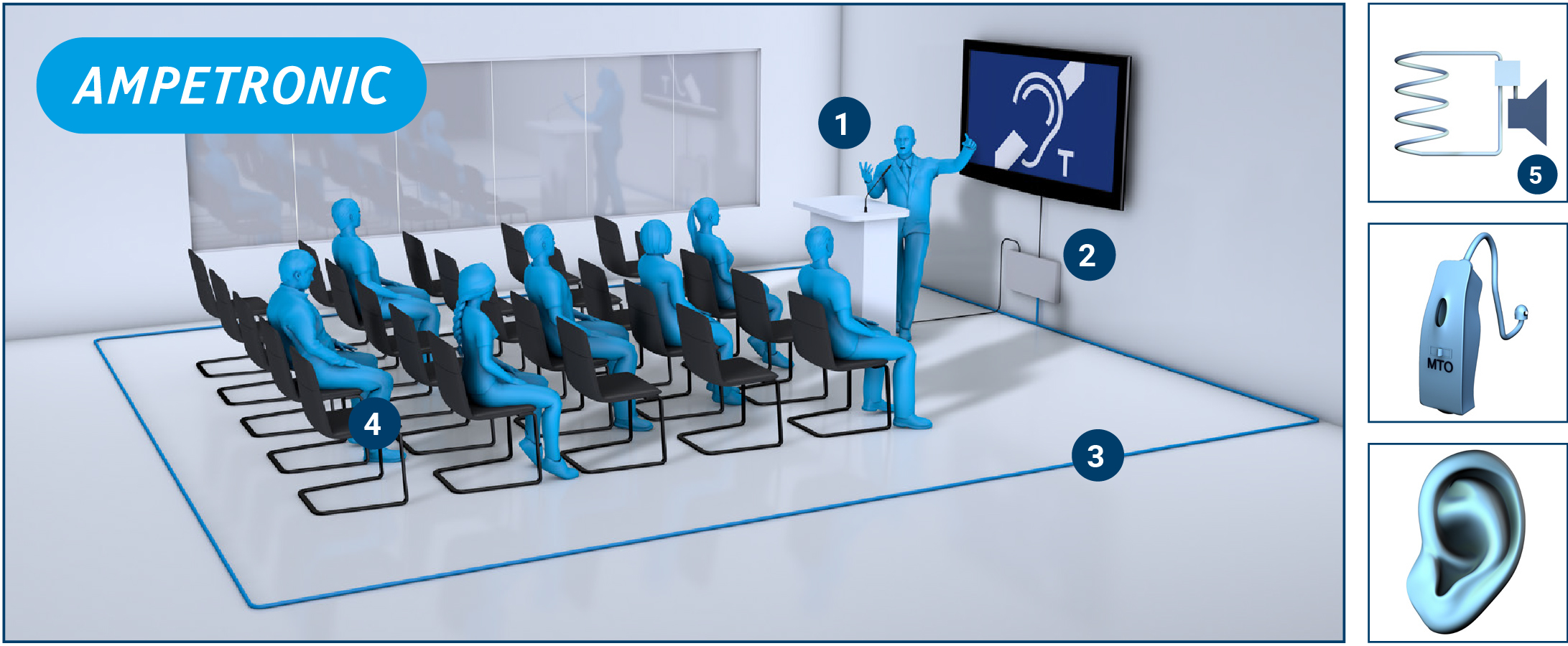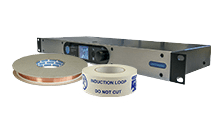An induction or hearing loop system transmits an audio signal directly into a hearing aid via a magnetic field. This greatly reduces background noise, competing sounds, reverberation and other acoustic distortions that reduce clarity of sound.
This diagram below illustrates how hearing loops work.

- A sound source, such as a voice, cinema or audio system, is captured using a microphone or line out connection.
- The sound signal is connected to an Audio Induction Loop driver. The driver generates a current which delivers the signal to a loop made from copper tape or wire.
- The copper wire hearing loop typically surrounds the area where the listening audience is located and produces a magnetic field.
- The magnetic field produced is picked up by a Telecoil (or T-coil) inside a hearing aid.
- A hearing aid tailors the sound to the specific needs of the individual. It delivers sound directly into the ear canal, without background noise and with the full spectrum of sound frequencies needed to make it intelligible.
The number of people that can fit in the ‘looped’ area at the same time is the only limitation.
Hearing aid wearers don’t suffer the inconvenience of asking for and wearing a headset that marks them out as hard of hearing; and expensive receivers are not required.
Although Hearing Loops are an inherently simple technology, care should be taken in their design, specification and installation. Ampetronic can support you in developing a loop system that conforms to the International Standard and is of optimum benefit to the end user.
For more information contact our friendly and knowledgeable team on +44 (0) 1636 610062 or email sales@ampetronic.com.



